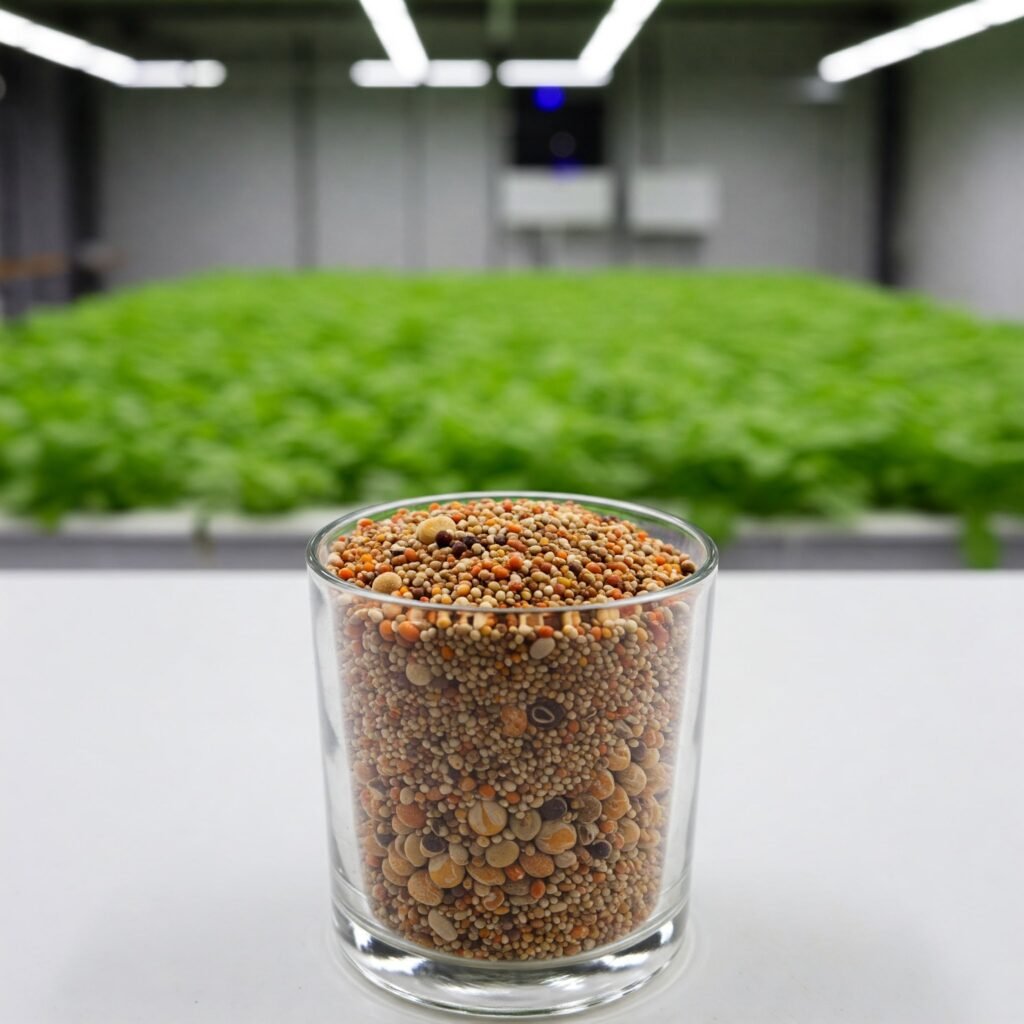When it comes to hydroponic gardening, your entire harvest potential begins with one critical element: hydroponics seeds. These specialized seeds form the foundation of any successful soilless growing operation, requiring unique characteristics to thrive in water-based environments. Unlike traditional soil gardening, hydroponic systems demand seeds that can rapidly absorb nutrients from solution, develop robust root systems without soil support, and resist pathogens common in constantly moist conditions.
This comprehensive guide will walk you through nine proven strategies for selecting, starting, and nurturing premium hydroponics seeds to maximize your yields. Whether you’re a hobbyist setting up a small indoor garden or a commercial grower optimizing large-scale production, these expert techniques will help you achieve exceptional results.
Why Hydroponics Seeds Differ from Conventional Seeds
Hydroponics seeds are specially bred or selected to perform exceptionally well in soilless growing systems. They possess several distinct advantages over regular seeds:
- Enhanced water absorption capabilities for faster germination
- Stronger root development to anchor plants in liquid media
- Improved disease resistance against root rot and waterborne pathogens
- Compact growth habits ideal for controlled environments
- Faster maturation rates compared to soil-grown varieties
Understanding these differences is crucial when building your hydroponic garden, as using the wrong seeds can lead to disappointing results.
1. Selecting True Hydroponic-Specific Seed Varieties
The first step to hydroponic success begins with choosing seeds specifically bred for hydroponic cultivation. Look for these key indicators when selecting your hydroponics seeds:
✔ “Hydroponic-optimized” labeling on seed packets
✔ High germination rates (95% or above)
✔ Disease-resistant traits (especially against pythium and fusarium)
✔ Compact plant stature for efficient space utilization
✔ Fast growth cycles for quicker harvest turnover
Premium seed companies now offer dedicated hydroponic lines with these enhanced characteristics. Some recommended varieties include:
- Lettuce: ‘Hydroponic Buttercrunch’
- Basil: ‘Genovese Compact’
- Tomatoes: ‘Hydroponic Sweet Million’
- Peppers: ‘California Wonder Hydroponic’
2. Matching Seeds to Your Hydroponic System Type
Different hydroponic systems perform best with specific types of hydroponics seeds. Consider these optimal pairings:
System Type | Best Hydroponics Seeds | |
Deep Water Culture | Leafy greens, herbs | Thrives in constant moisture |
Nutrient Film | Strawberries, spinach | Prefers shallow root systems |
Ebb & Flow | Tomatoes, peppers | Tolerates periodic dry cycles |
Aeroponics | Microgreens, lettuce | Benefits from misted roots |
Drip Systems | Cucumbers, eggplants | Handles larger plants well |
3. Analyzing Seed Germination Performance
Superior hydroponics seeds should demonstrate:
- 95%+ germination rates in controlled tests
- Uniform sprouting times (within 24-hour window)
- Vigorous initial root growth (visible within 3-5 days)
- Strong cotyledon development (first seed leaves)
Always request germination test data from suppliers or conduct your own small-scale tests before large plantings. A simple paper towel test can reveal much about seed viability.
4. Advanced Seed Starting Techniques
Pre-Germination Treatments
- Controlled soaking: 12-24 hours in pH-balanced water
- Pre-chilling: Some seeds benefit from 48-hour refrigeration
- Scarification: Gentle abrasion of hard seed coats
- Hormone priming: Gibberellic acid treatments for stubborn varieties
Optimal Starter Mediums
- Rockwool cubes: Excellent moisture retention and aeration
- Coconut coir: Sustainable and pH-neutral option
- Oasis cubes: Lightweight and easy to handle
- Peat pellets: Convenient for transplanting

5. Creating the Perfect Germination Environment
Hydroponics seeds require precise conditions for optimal sprouting:
Temperature: 72-78°F (22-26°C) ideal for most varieties
Humidity: 70-80% RH prevents drying out
Oxygen: Adequate air circulation prevents damping off
Light: 16-18 hours daily of full-spectrum LEDs
Darkness: Some seeds require initial darkness period
Invest in environmental controllers to maintain these parameters consistently.
6. Nutrient Management for Young Seedlings
| Phase | EC Range | pH Range | Key Nutrients |
|---|---|---|---|
| Germination | 0.4-0.6 | 5.8-6.0 | Calcium, phosphorus |
| First True Leaves | 0.8-1.0 | 5.8-6.2 | Balanced NPK |
| Pre-Transplant | 1.0-1.2 | 5.8-6.2 | Added micronutrients |
Always adjust nutrient strength gradually to avoid shock.
7. Preventing Common Seedling Problems
| Issue | Causes | Solutions |
|---|---|---|
| Damping off | High humidity, poor air flow | Increase ventilation, use fungicides |
| Leggy growth | Insufficient light | Lower lights, increase intensity |
| Nutrient burn | High EC levels | Flush system, reduce strength |
| Algae growth | Light exposure to media | Cover blocks, use hydrogen peroxide |
8. Commercial-Grade Seed Selection Criteria
For professional growers, these additional factors matter:
- Days to maturity: Impacts harvest scheduling
- Yield consistency: Plant-to-plant uniformity
- Post-harvest quality: Shelf life considerations
- Stress tolerance: Temperature/resistance traits
- Labor requirements: Ease of maintenance
9. Future Trends in Hydroponic Seeds
The hydroponics seeds market is evolving rapidly with:
- CRISPR-edited varieties for enhanced traits
- Biofortified crops with increased nutrients
- Drought-resistant genetics for sustainability
- Autoflowering strains for light efficiency
- Microbe-enhanced seeds for better symbiosis
Final Recommendations for Success
Implementing these nine strategies with your hydroponics seeds will lead to:
✓ 30-50% faster crop cycles
✓ 20-40% higher yields
✓ Reduced plant losses
✓ Superior product quality
Begin with proven varieties before experimenting with new cultivars, and always maintain detailed growth records to refine your approach.
Hydroponics Seeds FAQ
Q: How should I store unused hydroponics seeds?
A: In airtight containers with desiccant packs at 40°F (4°C) and 30% RH.
Q: Can I save seeds from my hydroponic plants?
A: Yes, but ensure proper drying and storage conditions.
Q: What’s the cost premium for hydroponic seeds?
A: Typically 15-30% more, but the yield increases justify the investment.
Q: Where can I find hydroponic seed trial results?
A: Check university agricultural extensions and hydroponic trade publications.
By focusing on premium hydroponics seeds and implementing these expert strategies, you’ll establish the strongest possible foundation for your hydroponic growing success. Remember that in hydroponics, your seeds are your starting point – invest wisely in quality genetics and you’ll reap the rewards throughout your entire growing cycle.
